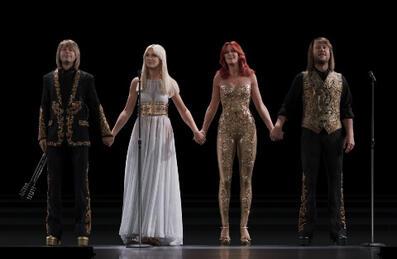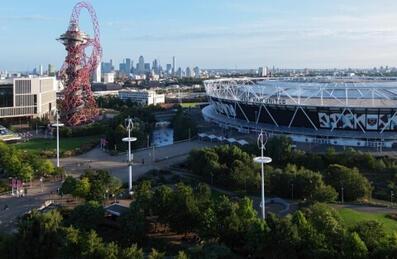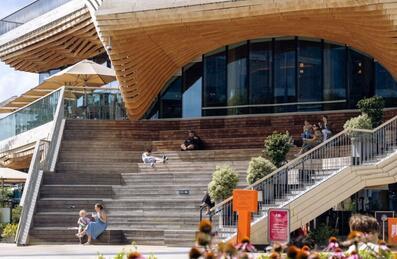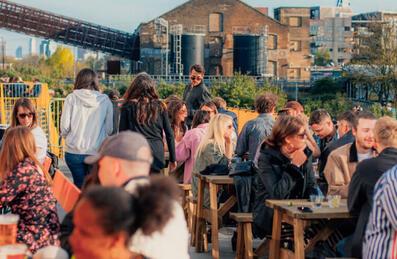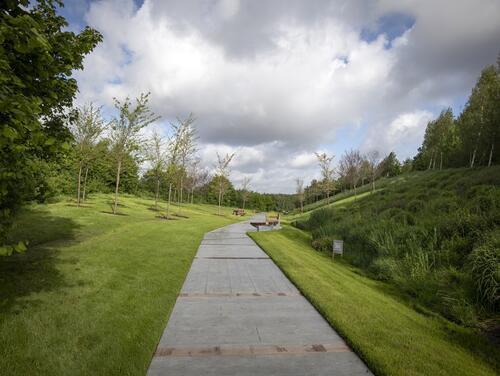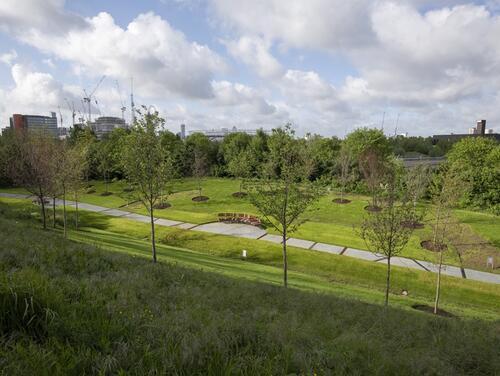
Popular Searches:
Keep up to date
Sign up today for exclusive offers and incredible experiences you won’t want to miss at Queen Elizabeth Olympic Park.
Sign up nowLondon Blossom Garden
Queen Elizabeth Olympic Park is honoured to host the London Blossom Garden – a garden commemorating the city's shared experience of the Coronavirus pandemic. The garden offers a place of reflection for Londoners to remember those they have lost, and pays tribute to London’s brave key workers who risked their own lives to help others and keep our city moving.
London Blossom Garden
Local communities helped shape the design of the garden which was created for everyone to find solace in and enjoy: a place for everyone to visit, stop and reflect, and a peaceful haven where wildlife can thrive.
Planted in the north of the Park, the garden has 33 blossom trees, each representing a London borough, including the City of London. The trees are arranged in three close circles made up of eight different species of tree. Every spring the garden comes alive with hawthorn, cherry, cherry plum, and crab apple blossom, creating a stunning scene of colourful blossoms against a backdrop of the vibrant green surrounding parklands.
The rich grassy lawns and vast planting beds provide spaces for wildlife to thrive, and as they continue to mature, the trees provide shade and shelter for both visitors and wildlife alike.
The path contains 33 pieces of recycled concrete and reclaimed timber to echo the number of trees. Seating near each tree ring provides a space for you to sit and reflect in the natural surroundings.
The Garden is enclosed within the existing banks of the Park to give a sense of refuge from the rest of the city, and offer a peaceful and tranquil space for reflection.
Tour the London Blossom Garden“This public garden of blossom trees will be a permanent reminder of the lives that have been lost, a tribute to every single key worker, and a symbol of how Londoners have stood together to help one another.”
Take a Look Around
FAQ
Guidance for visitors
- Please be considerate to others who are also visiting the Garden and please take any litter with you.
- We understand it is popular to fix ribbons to trees but please understand our trees are young and are still growing therefore anything tied to a tree will be removed. Similarly, please do not fix anything into the ground.
- We welcome flower tributes – these should be placed in the designated spaces for flowers next to the two information boards. These will be checked regularly by our gardening team with dead/dying flowers removed.
- More information about memorials on the Park can be found here.
- Feel free to sit on the benches or the grass, but if you would like to picnic, please make use of the surrounding parkland areas which are more suitable.
Further information and guidance for use of the London Blossom Garden can be found here.
Garden Design
The garden has 33 blossom trees arranged in three circles. Each represents a London borough, including the City of London. Every spring the garden will come alive with cherry, cherry plum, crab apple and hawthorn blossom.
Wildlife and Biodiversity
The garden has also been designed to support nature as well as visitors. It has large beds of perennial planting and species-rich grassland, a vital part of Queen Elizabeth Olympic Park’s ecology. This will help create habits for wildlife all year round.
Pollinator-friendly species have been chosen to support bees and insects. Flowers, like echinacea, will provide a home for local species, including the rare Amara bifrons beetle, found in the south of the park.
The different varieties of trees will blossom at different times to extend the blossom season in the spring. These blossoms will provide food for pollinating insects, and their fruit and berries will sustain migrating birds, such as fieldfare and redwing, which arrive at the park each autumn after long journeys from Scandinavia and other colder countries.
The garden fits into the Biodiversity Action Plan of Queen Elizabeth Olympic Park. We have also assessed its potential impact on local wildlife.
Tree and Plant Species
Crataegus laevigata 'Paul's Scarlet’ - Hawthorn
Malus ‘Evereste’ - Crab apple
Malus ‘Mokum’ - Crab apple
Prunus ‘Accolade’ - Cherry
Prunus ‘Shirofugen’ - Cherry
Prunus ‘Taihaku’ - Cherry
Prunus cerasifera ’Pissardii’ - Cherry plum
Prunus x yedoensis - Yoshino cherry
Sustainability
The London Blossom Garden was designed with sustainability and the environment in mind at every step of the process.
The timber used in the project is all reclaimed from the UK’s only FSC certified reclaimed tropical timber supplier. We have traced the origin of the wood to London sites including Duke Shore Wharf, Woolwich Ferry Terminal and even reclaimed fenders from an old canal lock in Queen Elizabeth Olympic Park. The timber’s lifespan will be much longer than other new types of FSC hardwood, meaning less impact on the planet’s natural resources.
The path is made primarily of concrete, using a high mix of locally-sourced recycled aggregate. The resilience of the concrete over time will mean it creates the lowest carbon footprint for a material of its kind.
The seating has been fabricated by local artists in workshops close to the park, meaning transit and transportation has been kept to an absolute minimum, as well as the project supporting the local economy.
All perennials plants have been grown peat-free via a specialist contractor for the project, and all trees have been grown in the UK.
The garden’s design supports sustainable drainage principles. There is a sunken channel, known as a swale, running alongside the path which slowly reintroduces rainwater into the soil, known as infiltration, easing the impact of surface water flooding after heavy rainfall.
Listening to communities
In October 2020, local arts organisation, Rosetta Arts, delivered a programme of community consultation for the London Blossom Garden, focussing on residents and key workers in the four boroughs around Queen Elizabeth Olympic Park: Hackney, Newham, Tower Hamlets and Waltham Forest.
The arts-based workshops explored participants’ lived experiences, feelings and thoughts around COVID-19, lockdown and its implications, as well as introducing the planned blossom garden.
Participants gave input into the overall tone and feel of the garden, how affected communities and key workers are represented, how space should be used and how the project should grow and develop over time.
Key themes which emerged included:
- Overall support for the idea of a blossom garden.
- The desire for a serene space for reflection that provides an escape from the city.
- The desire for sounds and colours of nature.
- An inclusive space for all communities, ages etc. that celebrates the diversity of east London.
- Not an overly-designed or manicured space – allowing visitors to use the space in their own way.
- Focus on physical and mental health – the garden needs to provide a place to, stop, rest, reflect and heal.
We would like to thank all the participants for taking the time to work with us on the project.
Accessibility
The London Blossom Garden is fully accessible with a hard-standing path through the centre. There are also three seating areas that have been designed to be accessible for those transferring from a wheelchair, and with adjacent spaces for wheelchairs and buggies.
The close-by Timber Lodge Café is completely accessible and has a fully-equipped Changing Places toilet.
Three dedicated Blue Badge parking spaces are available for visitors to the Timber Lodge and Tumbling Bay Playground located on Olympic Park Avenue, directly adjacent to the venue.
More information about accessibility at Queen Elizabeth Olympic Park.
Project Partners
The Mayor of London and National Trust created the London Blossom Garden in partnership with Queen Elizabeth Olympic Park and Bloomberg. The Edible Bus Stop® and Davies White Landscape Architects designed the garden. Rosetta Arts engaged local people, key workers and community groups in its development.
Thank you to the idverde landscape construction team and Lee Valley Regional Park Authority for their support. Also thanks to Junior Phipps, Flee Jones and Dan Gritten for their input into the design of the seating areas.
The garden is part of a national campaign by National Trust to help communities blossom.
